UPSC Daily Current Affairs- 11th November 2023 | Current Affairs & Hindu Analysis: Daily, Weekly & Monthly PDF Download
GS-I
Lake Titicaca
Subject: Geography
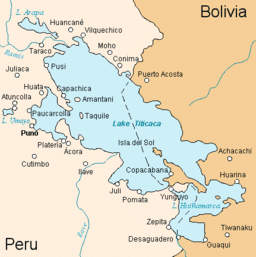
Why in News?
The water levels at Lake Titicaca are now reaching record lows, worsened by the El Nino weather phenomenon, compounding a long dry spell and rare high temperatures.
About Lake Titicaca
- It is the highest navigable body of water in the world.
- It is located at 3,810 metres above sea level in the Andes Mountains of South America.
- It lies on the border between Peru to the west and Bolivia to the east.
- Titicaca is the second-largest lake in South America (after Maracaibo).
- It covers some 8,300 square km and extends in a northwest-to-southeast direction for a distance of 190 km.
- It is 50 miles (80 km) across at its widest point.
- A narrow strait, Tiquina, separates the lake into two bodies of water.
- The lake averages between 140 and 180 metres in depth, but the bottom tilts sharply toward the Bolivian shore.
- The lake is 284 m deep at its deepest point, located in the northeastern section of the lake.
- More than 25 rivers empty their waters into Titicaca; the largest, the Ramis, drains about two-fifths of the entire Titicaca Basin.
- Forty-one islands rise from Titicaca’s waters, the largest of which, Titicaca Island, can be seen just off the tip of the Copacabana Peninsula in Bolivia.
- Lake Titicaca is a designated Ramsar Site of International Importance.
What are El Nino and La Nina?
- El Nino and La Nina are two opposing climate trends that deviate from normal conditions and normally run for nine to twelve months, but can often extend.
- These events occur every two to seven years on average (El Nino is more frequent than La Nina), but not on a regular basis, and together are referred to as the El Nino-Southern Oscillation (ENSO) cycle by scientists.
- El Nino is typically known as the warm phase (a band of warmer water spreading from west to east in the equatorial Pacific Ocean), and La Nina is identified as the cold phase (a band of cooler water spreading east to west) of ENSO.
- Both El Nino and La Nina can have global effects on weather, wildfires, ecosystems, and economics.
- What happens during El Nino?
- During El Niño, trade winds weaken.
- Warm water is pushed back east, toward the west coast of the Americas.
- Rainfall increases drastically in Ecuador and northern Peru, contributing to coastal flooding and erosion.
- As El Niño brings rain to South America, it brings droughts to Indonesia and Australia.
- Stronger El Niño events also disrupt global atmospheric circulation.
- The eastward movement of oceanic and atmospheric heat sources causes unusually severe winter weather at the higher latitudes of North and South America.
Source: The Print
Kali Tiger Reserve
Subject: Geography
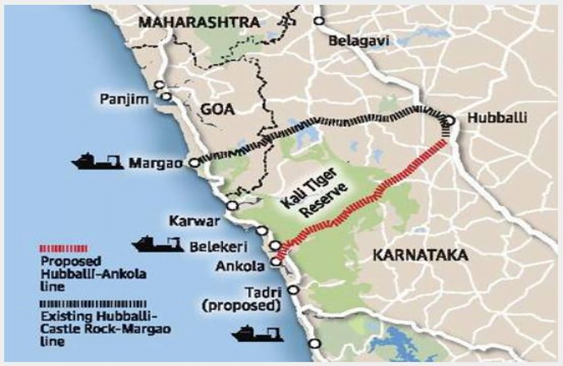
Why in News?
Kali Tiger Reserve officials recently arrested five habitual wildlife offenders and recovered a huge cache of poached animal parts from them.
- Location: Kali Tiger Reserve, earlier known as Dandeli-Anshi Tiger Reserve is located in the central portion of the Uttara Kannada (North Canara) district of Karnataka state.
- It comprises two important protected areas of the region, viz., Dandeli Wildlife Sanctuary and Anshi National Park.
- Dandeli Wildlife Sanctuary (475.018 sq km) and Anshi National Park (339.866 sq km) are contiguous to each other and form a single tract of protected area located in the biologically sensitive Western Ghats.
- River: The Kali River, which forms the major source of water for Uttara Kannada, flows through the tiger reserve, and hence the name.
- Vegetation: Forests are primarily moist deciduous and semi-evergreen, with excellent patches of evergreen forests in the westernmost parts as well as in deep valleys.
- Flora: The complex floral tapestry comprises hardwood trees like teak, silver oak, Malabar tamrind, jamba, lantana, bamboo, shrubbery, and dense vegetative undergrowth on the floor.
- Fauna: Prominent species are the Asiatic elephant, tiger, leopard, gaur, chevrotain, spotted deer, barking deer, sloth bear, dhole, jungle and leopard cat, Malabar civet, and giant civet.
Source: Deccan Herald
Phreatomagmatic eruption
Subject: Geography

Why in News?
Recently, a new island emerged near Japan's Ogasawara island chain after an undersea volcano erupted.
- A new island near Japan's Ogasawara island chain was formed by a phreatomagmatic eruption.
- It is an eruption that involves both magma and water.
- It typically interacts explosively leading to concurrent ejection of steam and pyroclastic fragments.
- Phreatomagmatic ash is formed by the same mechanism over a wide range of basic and acidic compositions.
- A blocky and uniform crust with low vesicle content is formed.
- Deposits from phreatomagmatic eruptions are thought to be better classified and finer-grained than those from magmatic eruptions.
- This is the result of higher fragmentation of phreatomagmatic eruptions.
- The Ogasawara Islands are located in the North-Western Pacific Ocean.
- It is also known as the Bonin Islands.
- It is a volcanic arc comprising more than 30 islands and islets.
- The landscape is dominated by subtropical forest types and sclerophyllous shrublands surrounded by steep cliffs.
- It is one of the famous UNESCO World Heritage sites of Japan.
Source: Times of India
GS-II
Kerala’s Pension Dilemma: A Review of the Contributory Pension Scheme
Subject: Polity
Why in News?
A report on Kerala’s contributory pension scheme (introduced in 2013) has been released after a recent Supreme Court verdict.
- This scheme, introduced in 2013, has sparked a debate due to its financial impact on the state.
- Let’s take a closer look at the National Pension System (NPS), Kerala’s pension scenario, and the findings of the review committee report.
NPS: A Quick Recap
- What is NPS? The National Pension System (NPS) is a contributory pension scheme initiated by the Indian government in 2004, extending to various states, including Kerala.
- How It Works: Under NPS, a fund is built from contributions made by employees and employers during their employment. Unlike the previous pension scheme funded by the government, NPS involves purchasing an annuity scheme at retirement, providing the pensioner with an annuity.
Kerala’s Pension Scenario
- Pension Challenges: Kerala faces rising pension liabilities, mainly due to a high life expectancy post-retirement and an increasing number of employees enrolled in NPS.
- Budget Impact: The state allocates a significant portion of its budget to committed expenditure, including salaries, pensions, and interest payments. Pension accounts for 21% of this expenditure.
- Contributions: Employees who joined after April 2013 contribute 10% of their salary (including dearness allowance) to the NPS corpus.
The Review Committee Report
- No Revocation Recommended: The review committee did not recommend scrapping the NPS, stating it was legally sound.
- Alternative Recommendations: It suggested raising the state government’s contribution from 10% to 14% and including dearness allowance at 14%. The report also proposed allowing death-cum-retirement gratuity for NPS subscribers.
Why the Report Supports NPS?
- Long-Term Perspective: The committee viewed pension matters from a long-term perspective, stating that continuing NPS would eventually reduce pension outgo as a share of the state’s GDP.
- Reducing Revenue Deficit: As pension outgo decreases, the share of revenue deficit also falls, freeing up resources for capital spending and social services.
Arguments against NPS in Kerala
- Low Annuities: Retirees under NPS have reported receiving meager annuities compared to the old pension scheme.
- Market Risks: Concerns exist about the impact of stock market crashes on NPS investments, as contributions are invested in various assets.
- Demand for Reintroduction: Some states have reintroduced statutory pension schemes due to employee demand.
Conclusion
- The review report favors retaining NPS in Kerala, emphasizing its long-term financial benefits.
- However, concerns about low annuities and market risks persist, prompting some states to consider returning to the old pension scheme.
- The debate over Kerala’s contributory pension scheme continues amid financial and welfare considerations.
Source: The Hindu
Speedy Disposal of Cases against Lawmakers: What SC Guidelines on the matter say
Subject: Polity
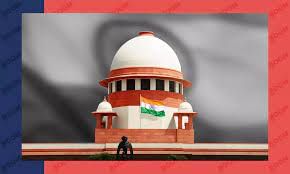
Why in News?
The Supreme Court has issued guidelines to ensure the quick resolution of criminal cases involving Members of Parliament (MPs) and Members of Legislative Assemblies (MLAs) across India.
- These guidelines aim to address the long-pending issue of lawmakers facing criminal charges.
Background
- Advocate’s Plea: These directions were issued in response to a plea filed by advocate Ashwini Kumar Upadhyay in August 2016.
- Key Demands: Upadhyay’s plea sought the swift handling of cases involving legislators and a lifetime ban on convicted politicians, including those currently in office, instead of the existing six-year disqualification mentioned in Section 8(3) of the Representation of People Act, 1951.
Understanding the Representation of People Act (RPA), 1951
- Purpose: The RPA, 1951, introduced by Dr. BR Ambedkar, governs the conduct of elections to India’s parliament and state legislatures.
- Content: It covers various aspects, including qualifications and disqualifications for membership, corrupt practices, and offenses related to elections.
- Section 8: Section 8 of the RPA deals specifically with the disqualification of legislators on conviction for certain offenses, such as promoting enmity between groups, bribery, undue influence, and offenses related to hoarding, profiteering, or adulteration of food or drugs.
- Section 8(3): This subsection states that a person convicted of an offense and sentenced to imprisonment for at least two years will be disqualified from the date of conviction and continue to be disqualified for an additional six years after release. In essence, it imposes a six-year disqualification on individuals convicted of offenses with a minimum two-year prison sentence.
Supreme Court’s Ruling
- Guidelines for Speedy Disposal: The Supreme Court, led by CJI DY Chandrachud, laid down guidelines for the prompt resolution of pending criminal cases against lawmakers.
- Suo Motu Cases: High courts across India are directed to establish a “special bench” to oversee criminal cases involving legislators. High courts can also register such cases on their own initiative.
- Flexible Approach: The court allows the chief justices of high courts to hear these cases or designate specific benches for this purpose. These cases may be listed regularly if needed, and the special bench can seek assistance from the advocate general or prosecutor.
- High Court Role: To efficiently manage these cases, the Supreme Court leaves it to high courts to devise suitable measures.
- Priority Cases: The court emphasizes prioritizing cases against lawmakers that carry the possibility of death or life imprisonment. Cases with sentences of five years or more are also given priority.
- HC’s Authority: High courts are empowered to issue similar orders and directions for effective case disposal. They can involve the Principal District and Sessions Judge in allocating cases to appropriate courts.
Conclusion
- The Supreme Court’s guidelines are aimed at expediting the resolution of criminal cases against MPs and MLAs and ensuring justice is served promptly.
- While these guidelines address the issue of speedy disposal, the larger question of replacing the six-year disqualification with a lifetime ban remains open for future consideration.
Source: Indian Express
GS-III
Scabies
Subject: Science and Technology
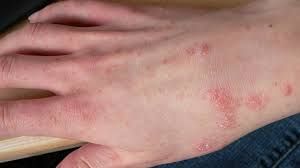
Why in News?
Recent reports suggest that Malawi is battling an outbreak of scabies.
- Hospitals register thousands of people with infectious skin disease, months after a wave of cholera swept African country.
About Scabies:-
- Scabies is a skin disease caused by a parasite named Sarcoptes scabie which is a tiny insect about 0.3 mm long called a mite.
- The female parasite burrows under the skin.
- It begins laying eggs within 2-3 hours of infection and generally lays 2-3 eggs daily.
- The eggs hatch and become adult mites (a term referring to this parasite) within 10 days.
- Scabies is a relatively contagious infection caused by a tiny mite (Sarcoptes scabie).
- Transmission is from person to person more by close skin contact.
Symptoms:–
- Severe itch
- Itchy lines and bumps on the fingers, wrists, arms, legs, and belt area
- Larger rash in infants and small children, including on the palms, soles of the feet, ankles, and scalp.
- A more severe type of scabies, called crusted scabies, makes the skin crusty and scaly and affects large areas of the body.
Treatment:-
- Several types of lotions (usually containing 5% permethrin) can be applied to the body and left on for 12-24 hours.
- One topical application is usually sufficient, although the scabicide may be reapplied after a week if mites remain.
- Itching can be lessened by the use of calamine lotion or antihistamine medications.
Prevention:-
- Good hygiene is essential in the prevention of scabies.
Source: The Hindu
Awaous Motla
Subject: Environment and Ecology
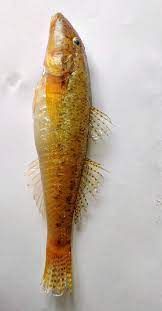
Why in News?
Researchers discover new freshwater fish species ‘Awaous Motla’ in Odisha’s Mahanadi River.
Background:-
- A group of scientists has discovered that an edible freshwater fish, available in the markets of western Odisha, is actually an unregistered species.
- The species belongs to the family ‘Awaous’ (Oxudercidae), thus named Awaous motla and ‘motla’ by fishermen.
- The fish has a vibrant yellow-coloured body and a fleshy upper lip.
- Can be consumed both fresh and dried.
- It was discovered from the Mahanadi River.
- It is one of the major east-flowing peninsular rivers in India.
- The river originates from the Sihawa range of hills in the Dhamtari district of Chhattisgarh state.
Source: Times of India
|
38 videos|5293 docs|1118 tests
|
















